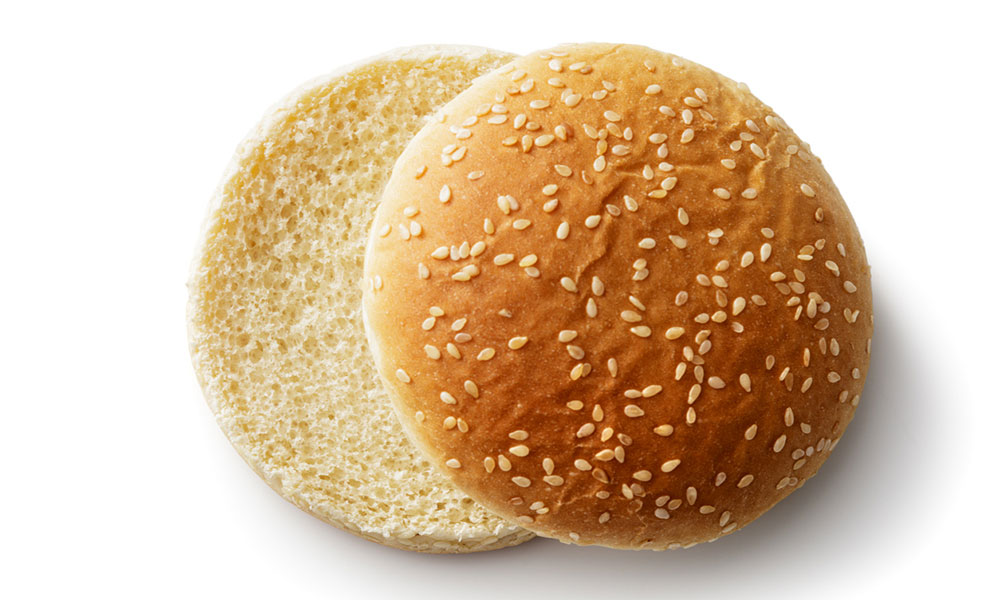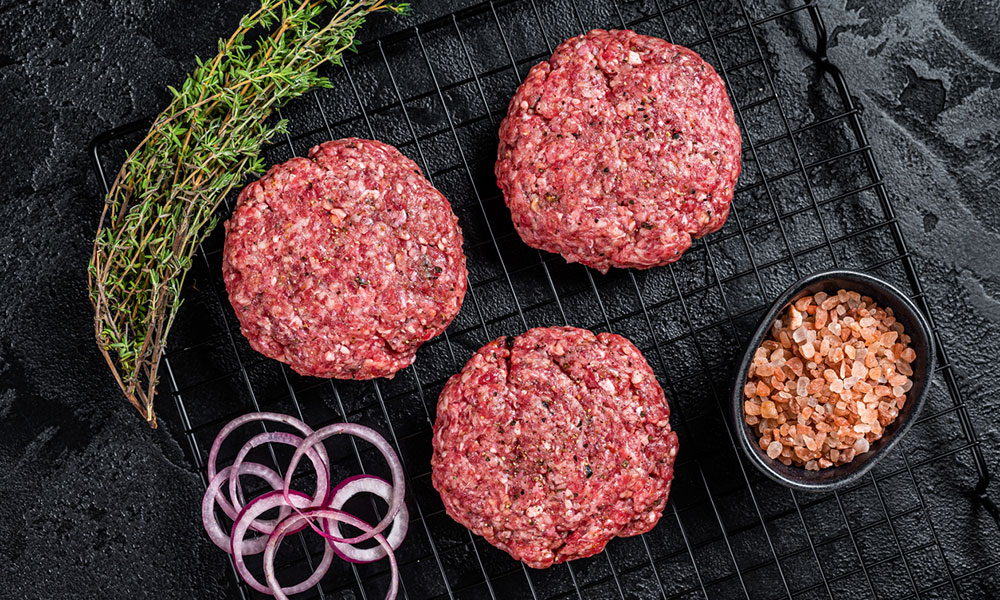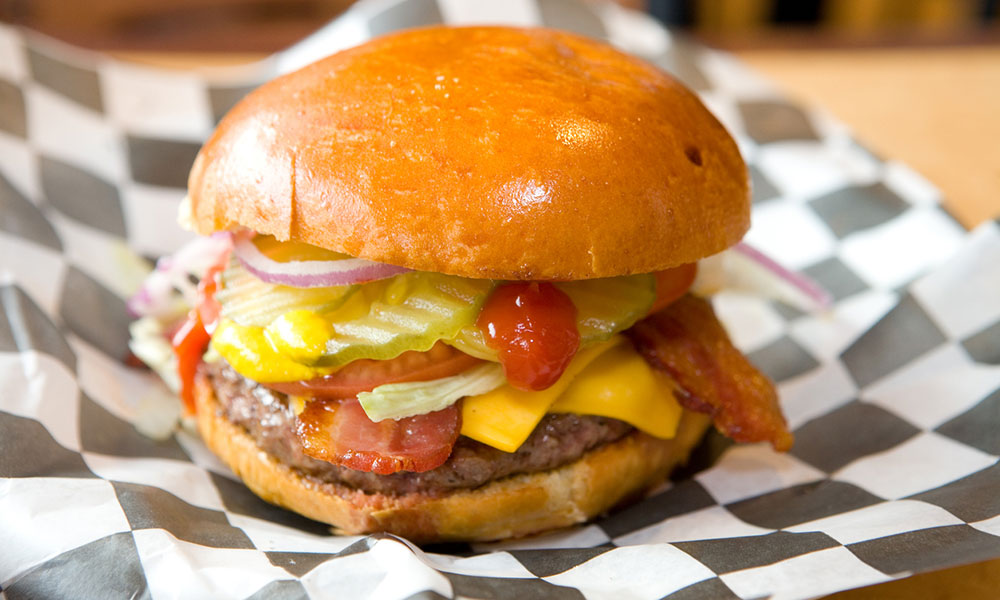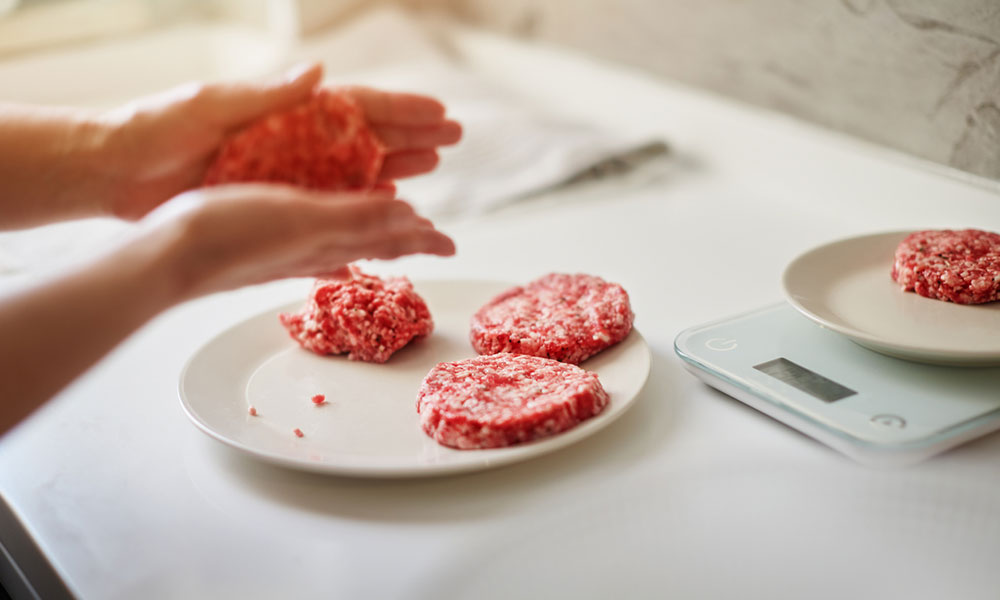Tips on improving on a classic
Burgers are a staple of the backyard cookout, and not just because they make a casual, tasty meal.
“They’re relatively easy to make and they’re versatile,” says Chris Short (Culinary Arts ’96), a Culinary Arts instructor who also teaches a Continuing Education course on gourmet burger making.
“You’ve got some kind of bun, you’ve got the ground beef and you’ve got a fridge full of condiments to play with.”
It sounds simple, but the options aren’t.
What kind of bun?
How do you pick the right meat?
What combination of toppings do you use?
That is, how do you turn a staple into something spectacular?
“There are certain things you can do that will make your burger better,” says Short. Here’s what to know.
The bun

The bun is the starting point to any good burger. Short likes to think of it as the “vessel.”
“It doesn’t necessarily have to be a bread component; it just needs to be some sort of method of transporting that burger to your mouth.”
Sure, you can use a supermarket hamburger bun or a crusty French roll, but flour tortillas and even iceberg lettuce are options, too.
If you are using a bun, Short recommends lightly buttering it. You can use regular butter, margarine or a butter compound (like garlic butter or pesto butter).
The butter, Short says, creates an “impervious shield” between the bun and condiments, preventing the bread from getting too soggy.
The meat

Beef is only one possibility. You can also use ground turkey, lamb or chicken. Short has even made burgers from deer meat.
The key is to make sure there’s some fat to the meat. “If it’s too lean, it’s going to be a dry, crumbly burger,” says Short. And no one wants that.
“[For] the deer burger, I actually grated frozen butter and added that, so it had bit of a fat component,” he says.
If you do go with beef, extra lean is your best choice. Typically, it’s around 20% fat, 80% meat (the ideal mixture, according to Short). He recommends either sirloin or chuck – the latter tastes a bit more “beefy,” he adds.
Stay away from prime rib. “They’re using a really nice cut and grinding it up into a burger,” says Short. “To me it’s a waste. It doesn’t taste any better than a chuck burger but you’re paying for it.”
The toppings

What’s a burger without toppings and condiments? A missed opportunity, according to Short, who encourages his students to think beyond the basics of lettuce, tomato and onion, plus mustard, ketchup and mayo.
“My class is really about inspiring people to think of things they can put on a burger,” he says.
For example, you could have a theme. “If you decide to go with a Mexican burger, you can do salsa as a topping.”
Feeling creative? Why not top the patty with onion rings, potato chips or pickled asparagus? Bored with cheddar cheese? Try blue, Swiss, Camembert – or even cheese strings for the kids.
“The beauty of the burger is versatility,” says Short. “You can do so much. It comes down to creativity and what you like to eat.”
4 tips for perfect patty prep

Add flavour. This can be as simple as salt and pepper or, depending on mood, taco seasoning, Montreal steak spice, even barbecue sauce.
Make them stick. Short recommends mixing in one egg per 1.5 kg of ground beef, along with about half a cup of panko bread crumbs (or until you have a mixture that is not wet and sticky).
Size them up. Short does this by hand. He suggests making beef, veal and lamb patties a little more than a centimetre (about half-an-inch) thick and 30% larger than the bun. They’ll shrink down to the size of the bun when cooked. “The fattier the meat the more shrinkage that will occur,” he says. Chicken, fish or game patties should be 10% to 20% larger than the bun prior to cooking.
Grill to perfection. Cook the meat until the internal temperature reaches 80 C (175 F). “That’s going to make sure any E. coli or bad things in there are killed off, but it’s not so high that it’s going to be dry,” says Short. Check using a probe thermometer. He recommends grilling over a medium flame, which typically produces a cooking temperature of around 160 C to 175 C (325 F to 350 F). A word of caution: temperature gauges on typical backyard barbecues are seldom accurate, says Short. The size of the flame is your best guide.